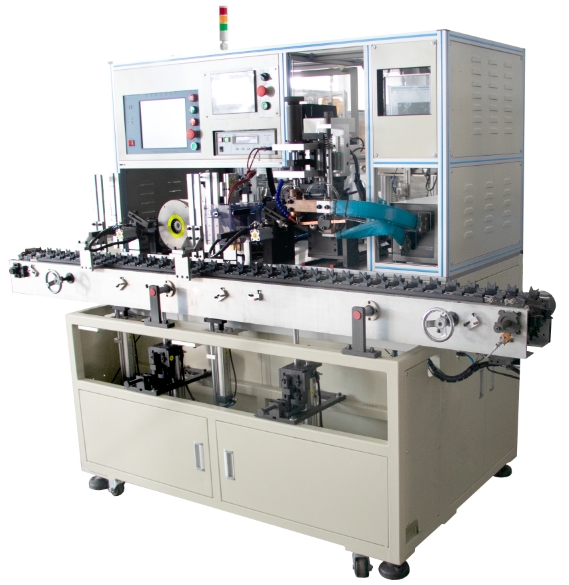What are the contents of the pre-service training for the staff of the motor automatic rotor spot welding test machine?
Motor motor automatic rotor spot welding test machine set mechanical, electrical, automation control in one, the staff pre-employment training needs to be centered on equipment operation, quality control and other aspects of the development, to ensure that employees quickly master professional skills. The following is the detailed training content:
1、Equipment basics training
Principle of equipment structure: Detailed explanation of the mechanical structure of the equipment, including high-precision rails, screws and other transmission components, as well as special fixtures, workbench design principles; analysis of the electrical system in the power supply module, control boards and drives work together; disassembly of the vision and spot welding system, explaining the industrial cameras, lenses, light sources, welding electrodes and control system software to achieve how to achieve rotor detection and welding.
Cognition of performance parameters: Introduce the key performance indicators such as equipment detection accuracy, welding speed, measurable rotor size range; guide employees to understand the parameter setting interface, learn to adjust the welding current, time, pressure, light intensity and other parameters according to different rotor models.

2、Operation process training
Preparation for start-up: Develop a standardized start-up procedure, require employees to turn on the power supply in order, start the control system, wait for the self-test, and observe the equipment status indicator; guide employees to check the connection of components, lubricant level, sensor status, etc. before start-up, and prepare the rotor and tools to be tested.
Operation standardization: Demonstrate the rotor clamping method step by step, and emphasize the influence of clamping accuracy on welding and test results; train employees to set parameters correctly in the operation interface, start the test program, and monitor the equipment operation, image acquisition, welding quality and data changes in real time, and deal with abnormalities in a timely manner.
Shutdown closing: clarify the shutdown steps, first stop the program, turn off the power, then clean up the equipment and site, organize the tools; require employees to carefully fill out the equipment operation record, record the test situation, abnormal problems, etc..
3、Protection training
Equipment protection: emphasize that it is strictly prohibited to touch the moving parts during operation, unauthorized modification of key parameters and other behaviors; explain in detail the function and use of emergency stop button, limit switch, overload protection and other protective devices.
Personal protection: train employees to wear correct protective caps, protective glasses, gloves, overalls and other equipment, explaining the applicable scenarios of different equipment.
Emergency response: simulate equipment failure, mechanical injury, electrical fires and other scenarios, train employees in emergency response procedures, including accident judgment, start the plan, evacuation and cooperation with the rescue and so on.
4、Equipment maintenance training
Daily maintenance: Teach employees to use the appropriate tools to clean the mechanical, optical and electrical parts of the equipment; instruct employees to regularly check the lubrication of the equipment, add lubricant, and troubleshoot loose connections of parts.
Regular maintenance: Introduce sensor calibration, transmission parts inspection, electrical system testing and other regular maintenance projects and cycles; train employees to cooperate with professionals to carry out in-depth maintenance work.
Troubleshooting: Train employees to identify common equipment failure phenomena, teach basic troubleshooting methods such as power supply, lines, parameters, etc., and require timely reporting of failures.
5、Quality control training
Quality standards: make clear to employees the quality standards for motor rotor welding and testing, covering weld size, strength, appearance, and rotor performance parameters, dimensional accuracy and other requirements, and strengthen understanding by comparing samples.
Inspection Methods: Train employees to use calipers, micrometers, multimeters and other inspection tools, and to master the methods of data collection, recording and judgment of results.
Problem Handling: Develop quality problem handling procedures, train employees to isolate products, record information and report when problems are found; organize employees to participate in quality analysis meetings, assist in finding the causes and propose improvement measures.
※ If you need help, please contact the technical specialist of Xinhui Electromechanical Equipment Co., Ltd. through the page chat tool for help.







